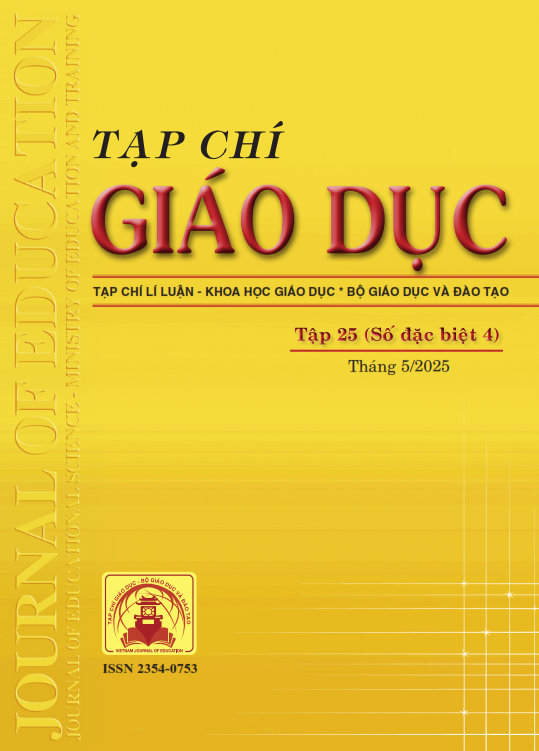Nghiên cứu đề xuất cấu trúc năng lực xây dựng môi trường học tập kiến tạo cho sinh viên sư phạm
Tóm tắt
A constructivist learning environment plays a crucial role in the development of students' self-learning and creativity. Especially in the context of modern education, the design and implementation of active teaching methods, combined with the use of educational technology, are key factors in creating a flexible and collaborative learning space.. Using methods of analysis and synthesis of theoretical studies and research articles, this study investigates and proposes a competence framework necessary for building a constructivist learning environment for pre-service teachers, with the aim of preparing them to become educators capable of developing creative and effective learning environments in the future. . This is an important and necessary theoretical framework, helping pedagogical universities to research and develop the capacity to build a constructive learning environment for pedagogical students as soon as possible to meet the requirements of the modern teaching process.
Tài liệu tham khảo
Barnett, R. (1992). Learning to effect. The Society for Research into Higher Education, Ltd., London (England).
Bernd Meier, Nguyễn Văn Cường (2014). Lí luận dạy học hiện đại. NXB Đại học Sư phạm.
Bloom, B. (1956). Axonomy of Educational Objectives: The Classification of Educational Goals. Handbook I: Cognitive Domain. Publisher: McKay, New York.
Bộ GD-ĐT (2018). Thông tư số 20/2018/TT-BGDĐT ngày 22/8/2018 quy định Chuẩn nghề nghiệp giáo viên cơ sở giáo dục phổ thông.
Jonassen, D. (1999). Designing constructivist learning environments. In C. Reigeluth, (Ed.), Instructional-design theories and models: A new paradigm of instructional theory (pp. 215-239). University Park: Pennsylvania State University.
Kolb, D. A. (1984). Experiential Learning: Experience as the Source of Learning and Development. Englewood Cliffs, NJ: Prentice Hall.
Lave, J., & Wenger, E. (1991). Situated Learning: Legitimate Peripheral Participation. Cambridge: Cambridge University Press.
Lê Nguyễn Hồng Hạnh (2021). Thực trạng nhận thức về kĩ năng thiết kế bài học theo lí thuyết Kiến tạo của sinh viên ngành Giáo dục tiểu học. Tạp chí Khoa học, Trường Đại học Phú Yên, 26, 9-16.
Mayer, R.E. (1983). Thinking, Problem solving, Cognition. New York: W.H.Freeman.
OECD (n.d.). Core competency framework. https://www.oecd.org/content/dam/oecd/en/about/careers/apply/OECD-Core-Competency-Framework.pdf
Piaget, J. (1973). Theory of cognitive development. International Psychotherapy Institute E-Books.
Phạm Hồng Quang (2006). Môi trường giáo dục. NXB Giáo dục.
Phạm Hồng Quang, Lê Hồng Sơn (2018). Xây dựng môi trường học tập cho học sinh trung học phổ thông. Tài liệu bồi dưỡng thường xuyên giáo viên trung học phổ thông 2011-2018, Module 6. Bộ GD-ĐT.
Vygotsky, L. S. (1978). Mind in Society: The Development of Higher Psychological Processes. Cambridge, MA: Harvard University Press.
Wilson, B. G. (Ed.). (1996). Constructivist Learning Environments: Case Studies in Instructional design. Educational technology Publications. Englewood Cliffs.
Zimmerman, B. J. (1989). A Social Cognitive View of Self-Regulated Academic Learning. Journal of Educational Psychology, 81, 329-339.
Đã Xuất bản
Cách trích dẫn
Số
Chuyên mục
Giấy phép

Tác phẩm này được cấp phép theo Ghi nhận tác giả của Creative Commons Giấy phép quốc tế 4.0 .












